Ten Beautiful Images showcasing Ancient Egyptian Art
Ancient Egyptians have painted beautiful decorative art on walls of tombs & temples, objects (such as slabs of stone/wood) and coffins. They have also produced beautiful naturalistic sculptures.
Egyptian art is often characterized by vibrant colour, detailed patterns and elegant figures. Most of this type of art is highly stylized and symbolic. This article showcases unique images of Ancient Egyptian art found in the Bridgeman Collection!
Wall painting from the Tomb of Sennefer
The ancient Egyptian noble Sennefer was the ‘Overseer of the Granaries and Fields, Gardens and Cattle of Amun’ and the ‘Mayor of the City’ during the reign of Amenhotep II of the Eighteenth Dynasty of Egypt. This wall painting depicts a boat on the river returning from a pilgrimage. Hieroglyphics accompany a white, brown and beige boat. There is a lot of symmetry in Ancient Egyptian art as seen in the white/blue diagonal stripes representing water.
Wall painting on the burial chamber in the Tomb of Tutankhamun
The burial chamber of King Tutankhamun below displays decorative, luxurious paintings on its walls. A gold rich background encapsulates the space in the chamber room, emphasizing the king's superiority. The art form bases itself on perfect balance as it reflects the ideal world of the Egyptian gods. The entrance to this magnificent tomb was discovered on the 4th November 1922 by British archaeologist Howard Carter and his men.
Limestone depicting the Royal Egyptian family Amenemhet
Hieroglyphics often accompanied many figural depictions in Egyptian art. Hieroglyphics were more than just a language! They were used to distinguish the Egyptians and used to communicate with the gods.
Wall painting of Ancient Egyptian Dancing Girls
These Ancient Egyptian figures are elegant in their depiction. Wall paintings in the Egyptian tombs are full of powerful imagery. These paintings were there to help the deceased in the afterlife. An idealized version of daily life in ancient Egypt is depicted. The texts that decorated the tombs originated from the Egyptian culture.
Painting of King Tutankhamun on his chariot
This image below is of another highly decorative scene found in Tutankhamun’s tomb. Tutankhamun is depicted on his horse chariot attacking Africans. A series of repetitive patterns including flowers and rectangles frames the scene.
Egyptian portrait of a ‘young woman in red’
This portrait of a young woman in red was created in 90 - 120 AD, Egypt. The woman looks out with huge eyes, smiling at the viewer. A wreath made of gold leaf is placed on the woman's curly black hair.
Painting of Ancient Egyptian Nephthys Goddess
Nephthys was the Egyptian goddess of the air. In Egyptian mythology, Nephthys was the daughter of Geb (Earth) and Nut (Sky) She also represented Lower Egypt!
Seated Statue of Pharaoh Hatshepsut
Pharaoh Hatshepsut was the fifth pharaoh of the Eighteenth Dynasty of Egypt. Historically she was the second confirmed female pharaoh. She came to the throne of Egypt in 1478 BC. This statue below is carved out of limestone, the statue appears smooth and the white/cream colour emphasizes the pharaohs purity.
Relief depicting Ancient Egyptian official Imenmes and Dejat
Reliefs on stone walls were common in Ancient Egypt. This image below shows an example of an Outline - relief - where only the outlines of figures were chiseled. The relief is impressive in its details considering its placement upon a flat surface!
Painting of the High Priest of Amun in Thebes
This Egyptian painting reminds the modern viewer of the surreal style! Two huge eyes at the top of the wood panel stare out at the viewer. Whilst the harper's instrument has a face placed on the end! Imaginative, unusual and innovative!
Discover more images of Ancient Egypt and its tombs in the Bridgeman Archive!
Sources:
https://www.brown.edu/Departments/Joukowsky_Institute/courses/greekpast/4887.html

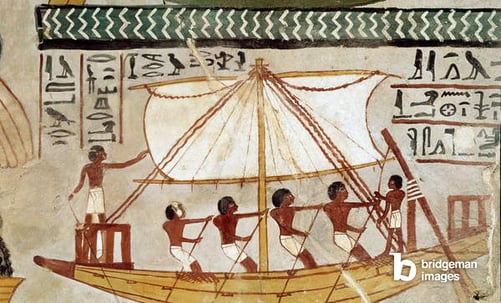
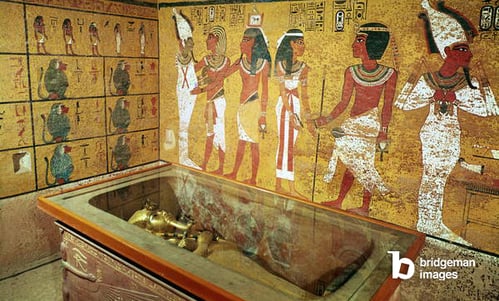
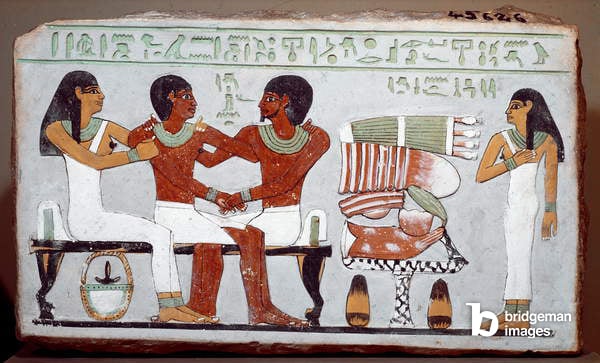
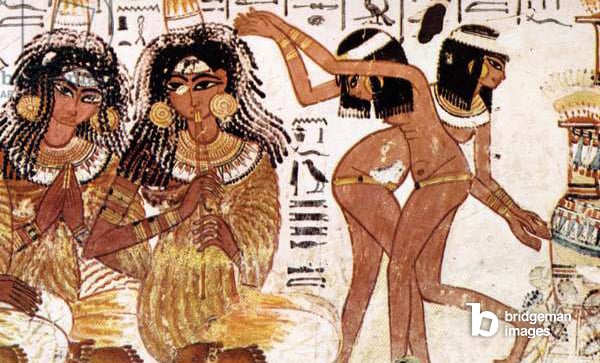


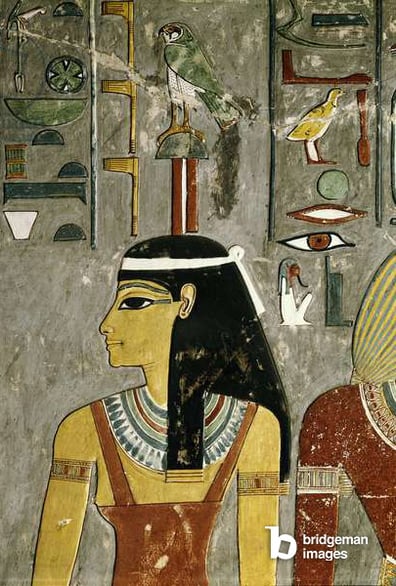
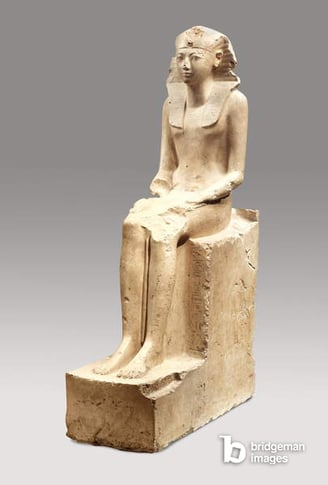
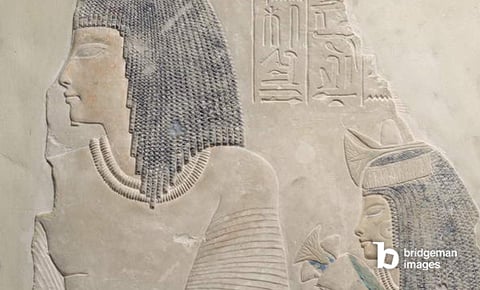
.jpg?width=327&name=stele%20egypte%20ancienne(1).jpg)